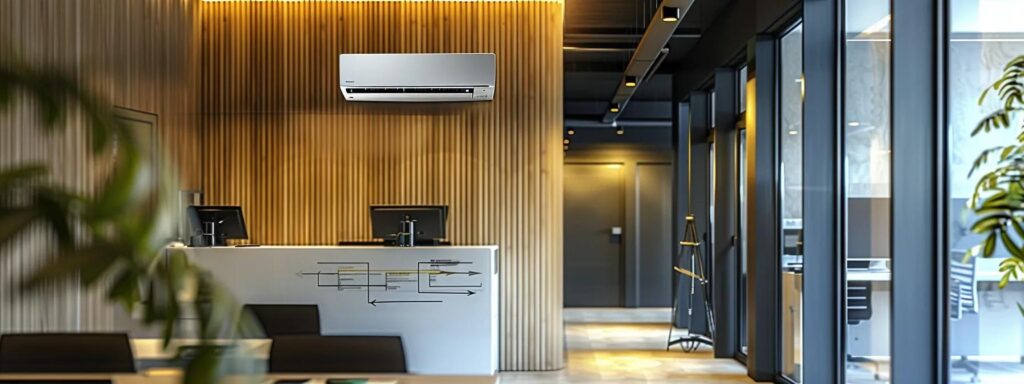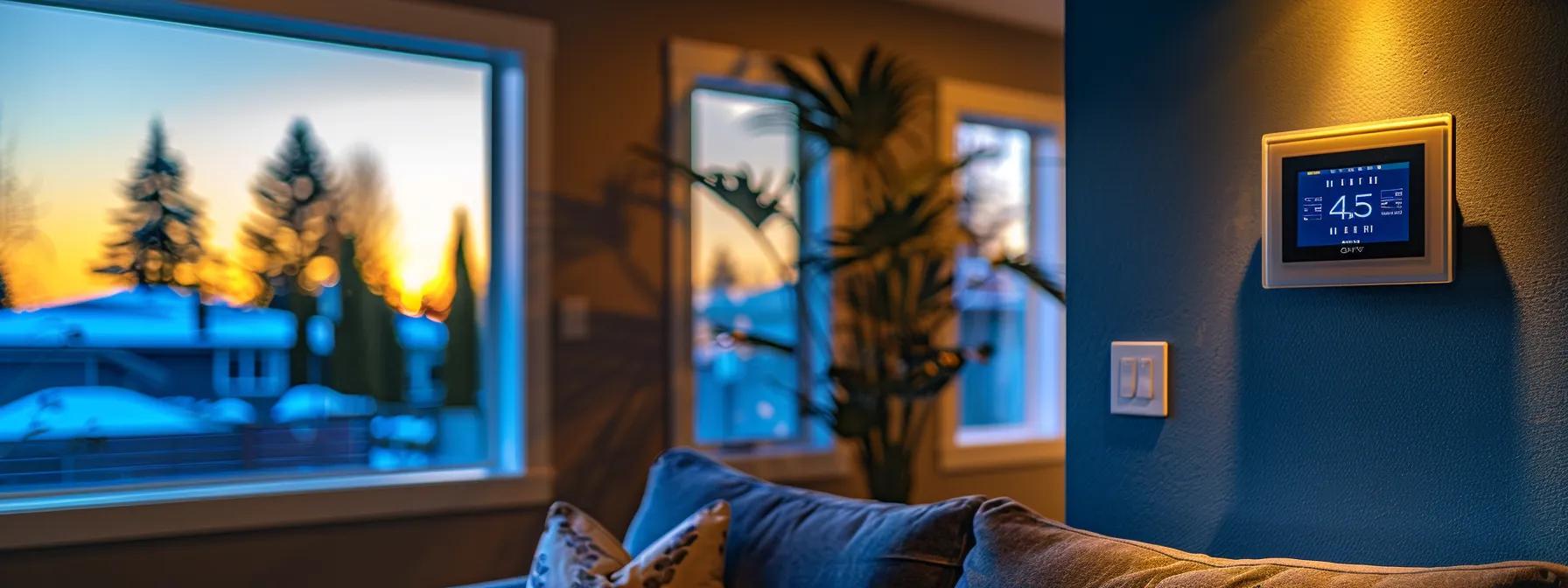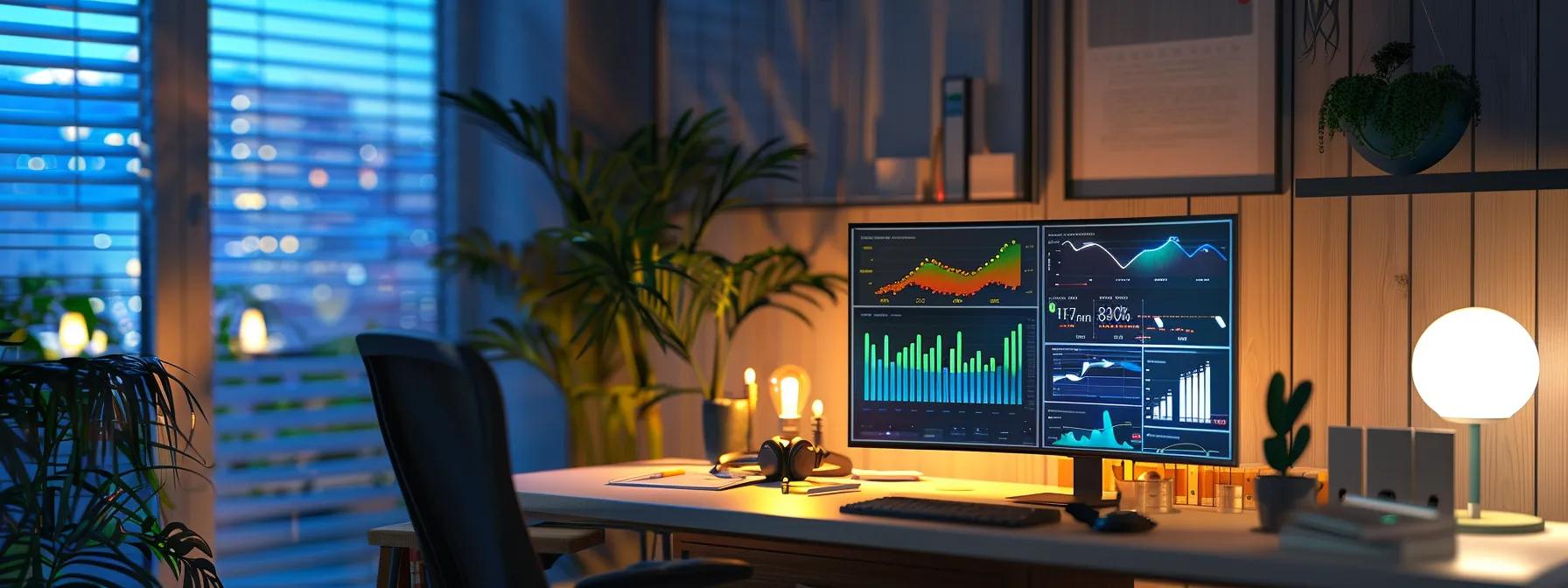Ways to Reduce Your AC Bills and Beat Summer Heat

Air conditioning expenses can significantly impact your monthly budget, especially during hotter months. Homeowners can lower their ac bills by managing hvac settings, scheduling maintenance plans for conducting regular maintenance, and adopting energy-efficient improvements such as incorporating heat pumps and optimizing furnaces where applicable. On Time Air, serving Savannah and surrounding areas since 2019, understands the importance of professional hvac services in helping homeowners achieve sustainable indoor comfort while keeping energy costs in check.
Implement Smart Thermostat Settings to Cut Cooling Costs
Smart thermostat settings are effective in reducing energy consumption. Homeowners can cut cooling costs by programming their AC to run less during inactive periods, optimizing temperature settings, and using built-in energy-saving modes.
Schedule Your AC to Run Less During Inactive Hours
Managing energy usage starts by programming your AC to operate less when you are not home or at night. Setting your thermostat to a higher temperature when the house is empty minimizes compressor run time and reduces refrigerant pressure waste. Automated schedules can save up to 10% on cooling costs annually. Homeowners should set routines based on when the property is unoccupied and use geo-fencing features in modern smart thermostats to adjust settings as they leave or return.
Optimize Temperature Settings for Comfort and Savings
Optimal temperature settings balance comfort and energy usage. Research suggests setting the thermostat between 78°F (26°C) and 80°F (27°C) during the hottest parts of the day. This range provides sufficient cooling without overburdening the compressor and improves the seasonal energy efficiency ratio (SEER) of your system. Even a 2°F increase in the set temperature can reduce energy consumption by 6% to 8%, making it a simple yet effective way to lower bills.
Utilize Energy-Saving Modes Effectively
Modern air conditioning units often feature energy-saving modes that automatically adjust compressor and fan speeds to reduce energy consumption. These settings not only improve efficiency but also reduce wear on mechanical components. Activating these eco-friendly modes helps achieve a balance between performance and power savings by optimizing airflow and refrigerant flow through controlled pressure adjustments.
Conduct Maintenance to Ensure Your AC Runs Efficiently

Regular AC maintenance is essential to keep the system running at peak efficiency. Scheduled cleaning and inspections prolong the unit’s lifespan and ensure that critical components—from the capacitor to the compressor—operate properly. Maintenance tasks include cleaning or replacing AC filters, checking ductwork for leaks, and scheduling tune-ups before the peak summer season.
Clean or Replace AC Filters Regularly for Maximum Airflow
The first defense for AC efficiency is clean air filters. Dirty filters restrict airflow, forcing the compressor to work harder and use more energy. Homeowners should check filters monthly and replace them at least every three months, especially during peak usage. Clean filters enhance heat transfer and indoor air quality by trapping dust and allergens. Upgrading to high-efficiency filters with Energy Star ratings can further support consistent performance.
Inspect Ductwork for Leaks and Improve Sealing
Leaking ductwork wastes energy by allowing cooled air to escape. Annual inspections should ensure that ducts are sealed and insulated properly. Sealing leaks not only improves airflow but also reduces pressure loss in the system. An energy audit that includes duct leakage testing can reveal inefficiencies and help quantify potential savings after repairs.
Schedule Professional Tune-Ups Before Peak Summer Heat
Professional tune-ups are vital for identifying and correcting issues. During these visits, technicians check refrigerant levels, capacitor function, and compressor health. Regular maintenance prevents costly breakdowns and extends the AC unit’s life. Technicians also calibrate system controls to maintain proper pressure gradients and energy-efficient operation. Homeowners who have tune-ups before peak summer consistently experience lower energy bills and improved comfort.
Utilize Ceiling Fans and Air Circulation Strategies
Ceiling fans and other air circulation devices can enhance AC performance by distributing cool air more evenly throughout your home. Combining smart cooling with effective air circulation creates a more comfortable indoor environment while reducing overall energy use.
Adjust Ceiling Fan Blades for Cool Air Distribution
Ceiling fans provide a complementary cooling effect when used with your AC. Ensure fan blades are angled to push cool air downward during the summer. Adjusting the pitch of the blades helps circulate air from the AC vents more efficiently and reduces reliance on the compressor. Fans set at medium speed maintain a consistent ambient temperature and may allow you to raise the thermostat setting without sacrificing comfort.
Combine Fans With AC for Enhanced Cooling Efficiency
Using ceiling fans alongside your AC creates a dynamic cooling effect that maximizes energy savings. Fans help distribute cool air and reduce the demand on the air conditioner. This synergy shortens the system’s runtime and cuts overall electricity consumption. It is best to use fans in rooms where you spend the most time, such as living areas and bedrooms, to boost the cooling effect during warmer periods.
Use Box or Exhaust Fans to Reduce Indoor Heat
Portable box or exhaust fans can also help reduce indoor heat buildup. They are particularly useful in ventilating areas prone to heat accumulation, such as kitchens or rooms with large windows facing direct sunlight. By ensuring proper airflow, these fans help lower the temperature near high-energy-consuming appliances and promote a more balanced, energy-efficient indoor environment. Their low power consumption and ease of use make them a smart addition to your overall cooling strategy.
Implement Energy-Efficient Home Upgrades to Save on Bills

Investing in energy-efficient home upgrades can lower your heating and cooling expenses over time. Upgrades like energy-efficient windows, enhanced insulation, and programmable thermostats improve indoor temperature stability and reduce your AC’s overall load.
Install Energy-Efficient Windows and Insulation
Energy-efficient windows reduce heat transfer and lower the demand on your AC. Homeowners who install double-glazed windows see a reduction in solar heat gain, which is crucial on hot days. Combining these windows with upgraded insulation in walls and attics maintains a consistent indoor temperature and minimizes the need for constant cooling. Improved insulation reduces thermal bridging and helps protect against heat infiltration, thereby supporting a higher overall energy star rating for your home.
Consider a Programmable Thermostat to Control Energy Use
A programmable thermostat is an excellent tool for managing energy consumption. In addition to simple scheduling, modern thermostats offer data analytics on energy use, helping homeowners identify periods of wasteful consumption. By integrating a programmable thermostat with home automation systems, users can adjust temperature settings remotely. These devices also provide alerts for unexpected spikes in energy usage, allowing for proactive maintenance and prompt adjustments to improve efficiency.
Adjust Daily Habits for Natural Cooling Benefits
Daily habits can have a significant impact on your home’s cooling efficiency. Simple changes, such as managing window coverings and limiting heat-generating activities during peak times, can reduce the demand on your AC system. These naturally cooling strategies work in tandem with your HVAC settings to create an energy-efficient home environment.
Keep Curtains or Blinds Closed to Block Direct Sunlight
One straightforward way to reduce cooling costs is by keeping curtains or blinds closed during the hottest parts of the day. Blocking direct sunlight decreases the thermal load on your home. Studies show that properly closed blinds can lower indoor temperatures by as much as 5–10°F, making it easier for your AC to maintain comfort. Homeowners should consider energy-efficient window coverings that not only block heat but also enhance interior décor.
Limit Oven and Stove Use During Hot Days
Cooking on hot days can increase indoor heat levels, forcing the AC to work harder. Adjusting daily routines to limit the use of ovens and stoves during peak heat is a practical step toward reducing energy consumption. Opt for outdoor grilling or preparing cold meals whenever possible. This change helps lower the amount of waste heat generated indoors, allowing the AC system to operate more efficiently.
Monitor Energy Consumption to Identify Waste

Monitoring your home’s energy consumption is a proactive way to identify waste and boost overall efficiency. Modern energy monitors and smart meters provide detailed insights into usage patterns, allowing homeowners to pinpoint inefficiencies in real time. Analyzing this data supports informed decisions about further HVAC adjustments or upgrades.
Use an Energy Monitor to Track AC Usage
An energy monitor offers quantifiable data on how much electricity your AC unit and other appliances consume daily. This data helps determine if the system is running efficiently or if there are unexpected consumption spikes that may indicate issues such as refrigerant leaks or an inefficient compressor. By tracking usage over time, homeowners can correlate spikes with specific behaviors or environmental changes and take targeted action to save energy.
Set Up Alerts for Unexpected Spikes in Energy Bills
Many smart energy monitors feature alerts for sudden spikes in energy use. These alerts can signal problems such as malfunctioning components or increased system pressure due to environmental factors. Early detection allows for timely professional intervention, reducing the risk of major failures and ensuring the system stays efficient. Regular monitoring and prompt responses to anomalies are essential practices for maximizing energy efficiency and lowering AC bills.
Below is a table summarizing key energy-efficient home upgrades and their benefits:
This table provides a quick overview of the most impactful home upgrades that help lower AC energy consumption and reduce monthly bills.
Final Thoughts
Reducing AC bills is achievable through a mix of smart thermostat settings, regular HVAC maintenance, and energy-efficient home upgrades. Homeowners can implement these strategies by adopting simple daily habits and using modern energy monitoring devices. On Time Air remains committed to providing high-quality HVAC services, ensuring every component—from the compressor to the ductwork—functions optimally to save energy and lower operating expenses. By integrating these techniques, homeowners not only see lower energy bills but also enjoy greater indoor comfort and a longer-lasting AC system.
Frequently Asked Questions
Q: How does scheduling my AC to run less during inactive hours save energy? A: Programming your thermostat to increase the temperature when you are away causes the AC unit to work less, thus reducing compressor runtime and energy usage.
Q: Why is it important to clean or replace AC filters regularly? A: Clean filters ensure maximum airflow and efficient heat exchange, preventing the AC from overworking and using excess energy while also improving indoor air quality.
Q: What are the benefits of combining ceiling fans with my AC system? A: Ceiling fans circulate cool air more effectively. They allow you to raise your thermostat settings slightly without compromising comfort, reducing energy usage.
Q: How can energy-efficient windows contribute to lowering cooling costs? A: Energy-efficient windows minimize solar heat gain and help maintain stable indoor temperatures, reducing the cooling load on your AC system and lowering energy bills.
Q: What role do programmable thermostats play in reducing AC bills? A: Programmable thermostats offer precise control over temperature settings and allow for scheduling based on occupancy, which leads to significant energy savings.
Q: How does monitoring energy consumption help with cost savings? A: Energy monitors track the usage of your AC and other appliances, helping you spot inefficiencies and address issues promptly to reduce energy expenses.
Q: Are there any immediate actions homeowners can take during hot days to reduce AC use? A: Yes, closing curtains or blinds to block direct sunlight and limiting the use of heat-generating appliances during peak hours can significantly reduce indoor heat build-up and AC demand.
Q: How often should I schedule professional tune-ups for my AC? A: It is recommended to schedule professional AC tune-ups at least once a year, ideally before the peak summer season, to ensure optimal performance and energy efficiency.
Q: Can regular maintenance of ductwork affect energy savings? A: Absolutely. Inspecting and sealing duct leaks ensures that conditioned air reaches its intended areas efficiently, reducing energy waste and improving overall system performance.
Q: What long-term benefits arise from investing in energy-efficient home upgrades? A: These upgrades enhance your home’s overall energy efficiency, lower monthly utility bills, increase comfort, and improve the longevity and performance of your HVAC system.